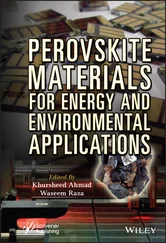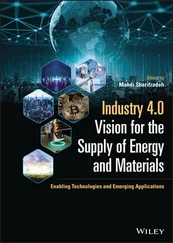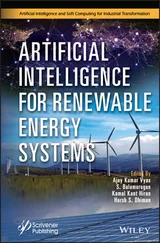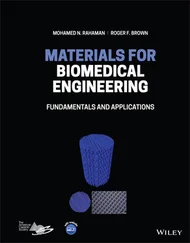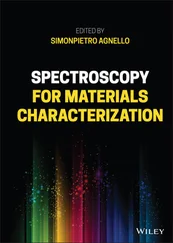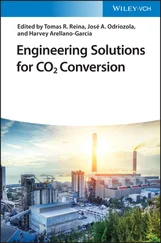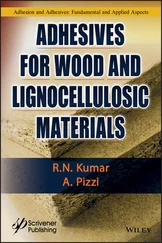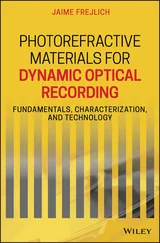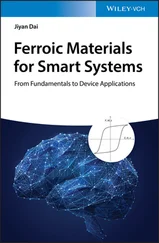Materials for Solar Energy Conversion
Здесь есть возможность читать онлайн «Materials for Solar Energy Conversion» — ознакомительный отрывок электронной книги совершенно бесплатно, а после прочтения отрывка купить полную версию. В некоторых случаях можно слушать аудио, скачать через торрент в формате fb2 и присутствует краткое содержание. Жанр: unrecognised, на английском языке. Описание произведения, (предисловие) а так же отзывы посетителей доступны на портале библиотеки ЛибКат.
- Название:Materials for Solar Energy Conversion
- Автор:
- Жанр:
- Год:неизвестен
- ISBN:нет данных
- Рейтинг книги:5 / 5. Голосов: 1
-
Избранное:Добавить в избранное
- Отзывы:
-
Ваша оценка:
- 100
- 1
- 2
- 3
- 4
- 5
Materials for Solar Energy Conversion: краткое содержание, описание и аннотация
Предлагаем к чтению аннотацию, описание, краткое содержание или предисловие (зависит от того, что написал сам автор книги «Materials for Solar Energy Conversion»). Если вы не нашли необходимую информацию о книге — напишите в комментариях, мы постараемся отыскать её.
This book provides professionals and students with a resource on the basic principles and applications of solar energy materials and processes, as well as practicing engineers who want to understand how functional materials operate in solar energy conversion systems.
Audience
Materials for Solar Energy Conversion — читать онлайн ознакомительный отрывок
Ниже представлен текст книги, разбитый по страницам. Система сохранения места последней прочитанной страницы, позволяет с удобством читать онлайн бесплатно книгу «Materials for Solar Energy Conversion», без необходимости каждый раз заново искать на чём Вы остановились. Поставьте закладку, и сможете в любой момент перейти на страницу, на которой закончили чтение.
Интервал:
Закладка:
Table of Contents
1 Cover
2 Title page
3 Copyright
4 Preface
5 Part 1 SOLAR CELLS - FUNDAMENTALS AND EMERGING CATEGORIES 1 Introduction to Solar Energy Conversion 1.1 Introduction 1.2 Forms of Energy 1.3 Solar Radiation 1.4 Heat Transfer Principles 1.5 Basic Laws of Radiation 1.6 Solar Energy Conversion 1.7 Photo-Thermal Conversion System 1.8 Thermal Applications 1.9 Solar Drying 1.10 Photovoltaic Conversion 1.11 Photovoltaic Thermal Systems 1.12 Conclusion References 2 Development of Solar Cells Abbreviations 2.1 Introduction 2.2 First-Generation PV Cells 2.3 Second-Generation Solar PV Technology 2.4 Third-Generation PV Cells 2.5 Conclusion References 3 Recycling of Solar Panels Abbreviations 3.1 Introduction 3.2 PV and Recycling Development Worldwide 3.3 Current Recycling and Recovery Techniques 3.4 Strategies for Recycling Processes 3.5 Approaches for Recycling of Solar Panel 3.6 Global Surveys in PV Recycling Technology 3.7 Ecological and Economic Impacts 3.8 Conclusion References 4 Multi-Junction Solar Cells Abbreviation 4.1 Introduction 4.2 Key Issues for Realizing the Efficiency of MJCs 4.3 Structure of Multi-Junction Cell 4.4 Novel Materials for Multi-Junction Cells 4.5 Applications 4.6 Conclusions References 5 Perovskite Solar Cells 5.1 Introduction 5.2 Structure and Working 5.3 Fabrication of Simple Perovskite Solar Cell 5.4 Fabrication Methods 5.5 Stability of Perovskite Solar Cell 5.6 Losses in Solar Cells 5.7 Conclusion References 6 Natural Dye-Sensitized Solar Cells Abbreviations 6.1 Introduction 6.2 Dye-Sensitized Solar Cells (DSSCs) 6.3 Dye (Photosensitizer) 6.4 Conclusion References
6 Part 2 MATERIALS, METHODS AND APPLICATIONS 7 Organic Materials and Their Processing Techniques 7.1 Introduction 7.2 Organic Materials 7.3 Electrical Characteristics of OPVs 7.4 Potential Materials for OPV Applications 7.5 Conclusion References 8 Inorganic Materials and Their Processing Techniques 8.1 Introduction 8.2 Functional Inorganic Materials 8.3 Comprehensive Processing Strategy 8.4 Solid-Phase Processing 8.5 Solution-Phase Processing 8.6 Gas-Phase Processing 8.7 Challenges in Nanomaterial Production and Processing 8.8 Conclusion and Perspectives References 9 2D Materials for Solar Cell Applications 9.1 Introduction 9.2 Fundamental Principles of Solar Cell 9.3 Fabrication Methods for the Generation of Solar Cell 9.4 Introduction to 2D Materials 9.5 Solar Cell Application of 2D Materials 9.6 Conclusions References 10 Nanostructured Materials and Their Processing Techniques 10.1 Introduction 10.2 The Need for Solar Energy 10.3 Nanoscience and Nanotechnology 10.4 Nanotechnology in Solar Energy 10.5 The Outlook of Nanomaterials in the Performance of Solar Cells 10.6 Photovoltaic-Based Nanomaterials and Synthesis Techniques 10.7 Nanofluids in Solar Collectors 10.8 Nanofluids in Solar Stills 10.9 Conclusion References 11 Coating Materials, Methods, and Techniques 11.1 Introduction 11.2 Thin Film Deposition Techniques 11.3 Anti-Reflection Thin Films 11.4 Methods of Thin Film Growth 11.5 Thin Film Characterization 11.6 Performance Analysis of ARC Coated Solar Cells 11.7 Conclusion References 12 Anti-Reflection Coating 12.1 Introduction 12.2 Anti-Reflection Coating 12.3 Perspectives on ARC Materials 12.4 Techniques for Coating ARC 12.5 Literature Studies: Impact of ARC on Performance of Solar Cell 12.6 Conclusion References 13 Thermal Energy Storage and Its Applications 13.1 Introduction 13.2 Types of ES 13.3 Methods of TES 13.4 Applications of TES 13.5 Conclusion References
7 Index
8 End User License Agreement
Guide
1 Cover
2 Table of Contents
3 Title page
4 Copyright
5 Preface
6 Begin Reading
7 Index
8 End User License Agreement
List of Illustrations
1 Chapter 1 Figure 1.1 Various modes of heat transfer. Figure 1.2 Non-concentrating liquid flat plate collectors. Figure 1.3 Non-concentrating air collectors. Figure 1.4 Concentrating collectors. Figure 1.5 Natural circulation system [1]. Figure 1.6 SWH by forced circulation-Industrial purposes [19]. Figure 1.7 Forced circulation system—Domestic purposes. Figure 1.8 Flash type [1]. Figure 1.9 Direct method [1]. Figure 1.10 Unfired boiler [1]. Figure 1.11 Open to solar drying system method. Figure 1.12 Direct solar energy crop drying method. Figure 1.13 Forced circulation system method. Figure 1.14 Schematic figure of photovoltaic module.
2 Chapter 2 Figure 2.1 Classification of photovoltaic (PV) solar cells. Figure 2.2 Single-crystalline PV cells. Figure 2.3 Amorphous silicon PV cell. Figure 2.4 Cadmium telluride PV cell. Figure 2.5 Cadmium indium gallium diselenide PV cell. Figure 2.6 Copper zinc tin sulfide PV cell. Figure 2.7 Dye sensitized PV cell. Figure 2.8 Organic PV cell. Figure 2.9 Perovskite PV cell. Figure 2.10 Polymer photovoltaic cell. Figure 2.11 Quantum dot photovoltaic cell.
3 Chapter 3 Figure 3.1 Power generating capacity installed in 2017 [5, 6] (Reproduced and ob... Figure 3.2 Market share of PV panels by technology type (2014-2030) [4, 5, 23, 2... Figure 3.3 PV panel failure rates according to customer complaints [5, 28, 34] (... Figure 3.4 Different types of solar PV recycling processes [5, 40, 41] (Reproduc... Figure 3.5 PV wafers during heating procedure: (a) before heating; (b) after hea... Figure 3.6 Recycling techniques for various types of solar panels [4] (Reproduce...Figure 3.7 The estimated cumulative worldwide solar PV module waste (tonnes) 201...
4 Chapter 4Figure 4.1 Different layers in MJC [36].Figure 4.2 Layers of InGaP/GaAs cell—Schematic representation [11].Figure 4.3 Materials, thickness, and doping concentration of various layers in I...Figure 4.4 VI curve of InGaP/GaAs multi-junction solar cell [32].Figure 4.5 Redesigned structure of InGaP/GaAs by employing BSF layer—Schematic r...Figure 4.6 Materials, thickness, and doping concentration of various layers in I...Figure 4.7 VI curve of InGaP/GaAs multi-junction cell with BSF layer [40].Figure 4.8 Vanguard I satellite [60].Figure 4.9 Solar aircraft [61].
5 Chapter 5Figure 5.1 Cell efficiencies of various solar cells.Figure 5.2 Broad classification of perovskite materials.Figure 5.3 (a) Mesoporous n-i-p structure. (b) Inverted p-i-n planar structure. ...Figure 5.4 Perovskite solar cell architecture.Figure 5.5 Fabrication of simple perovskite solar cell.Figure 5.6 Fabrication techniques of perovskite solar cell.Figure 5.7 Various losses in solar cells.Figure 5.8 Control measures for recombination losses in solar cells.
6 Chapter 6Figure 6.1 Solar cell generations [2].Figure 6.2 Number of publications per year from literature, advanced search usin...Figure 6.3 Schematic diagram of a dye-sensitized solar cell [10].Figure 6.4 Types of plant pigments [2].Figure 6.5 Possible bonding schemes of some anthocyanin molecules to TiO 2surfac...Figure 6.6 FTIR spectra of the dyes extracts: (a) cassia tora and cassia alata a...Figure 6.7 Absorption spectra of the extracted dyes [52].Figure 6.8 Absorption spectra of mixture [57].Figure 6.9 Absorption spectra of (a) undoped and Na doped TiO2 films, (b) Kigeli...
7 Chapter 7Figure 7.1 Organic solar cell operation.Figure 7.2 Single layer OPV cell.Figure 7.3 Bilayer solar cell.Figure 7.4 Bulk heterojunction photovoltaic cells.Figure 7.5 Traditional equivalent circuit model for solar cell.Figure 7.6 Structure of some important electron-donor materials [11].Figure 7.7 Structure of some new electron-acceptor materials [11].
8 Chapter 8Figure 8.1 Comprehensive strategy for the production and processing of inorganic...Figure 8.2 Schematic representation of high speed vibration milling (ball millin...Figure 8.3 Schematic representation of the friction consolidation setup.Figure 8.4 Diagrammatic representation of sol-gel process.Figure 8.5 Diagrammatic representation of sol-gel process.Figure 8.6 Schematic drawing of spray pyrolysis for the production of nanopowder...Figure 8.7 Experimental design of LP-PLA for the synthesis of nanoparticles.Figure 8.8 Schematic representations of electrospinning and electrospraying tech...Figure 8.9 Schematic picture of gas and inert gas condensation setup.Figure 8.10 Schematic representation of gas-phase flame spray pyrolysis.
Читать дальшеИнтервал:
Закладка:
Похожие книги на «Materials for Solar Energy Conversion»
Представляем Вашему вниманию похожие книги на «Materials for Solar Energy Conversion» списком для выбора. Мы отобрали схожую по названию и смыслу литературу в надежде предоставить читателям больше вариантов отыскать новые, интересные, ещё непрочитанные произведения.
Обсуждение, отзывы о книге «Materials for Solar Energy Conversion» и просто собственные мнения читателей. Оставьте ваши комментарии, напишите, что Вы думаете о произведении, его смысле или главных героях. Укажите что конкретно понравилось, а что нет, и почему Вы так считаете.

